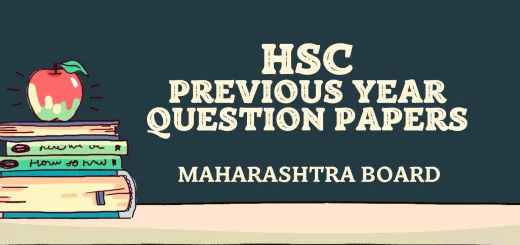Bills of Exchange Class 12 | Maharashtra Board New Syllabus
Bills of Exchange
Meaning of Bills of Exchange:
“A bill of exchange is an unconditional order in writing, addressed by one person to another, signed by the person giving it, requiring the person to whom it is addressed to pay on demand or at a fixed or determinable future time a sum certain in money to or to the order of a specified person, or to bearer”. Great Britain (1882) Bills of Exchange Act 1882.
Some features of Bills of Exchange:
- It must contain a confirmation order to make a payment and not just the request.
- The order should not have any conditions.
- The bill must be signed by both the drawee and the drawer.
- The amount stated on the bill should be paid on demand or on the expiry of a fixed time.
- The amount is paid to the beneficiary of the bill, specific person, or against a definite order.
In the Books of Drawer/Receiver
A bill receivable can be treated in the following four ways by its receiver(Drawer).
- He can retain the bill till the date of maturity.
- He can send the bill to the bank for collection.
- He can get the bill discounted from the bank.
- He can endorse the bill in favour of his Creditor.
The accounting treatment in the books of a receiver (Drawer) under all the four conditions are given below under the assumption that the bill is duly honoured on maturity by the acceptor.
(1) When the bill of exchange is retained by the receiver(Drawer) till the date of its maturity:
On receiving the bill
Bills Receivable A/c Dr.
To Debtors A/c
On maturity of the bill
Cash/Bank A/c Dr.
To Bills Receivable A/c
However, when the bill of exchange is retained by the Drawer and sent to the bank for collection a few days before maturity, the following entries are recorded:
On sending the bill for collection
Bills Sent for Collection A/c Dr.
To Bills Receivable A/c
On receiving the confirmation from the bank that the bill has been collected
Bank A/c Dr.
To Bills Sent for Collection A/c
(2) When the receiver gets the bill discounted from the bank:
On receiving the bill
Bills Receivable A/c Dr.
To Debtors A/c
On discounting the bill
Bank A/c Dr.
Discount A/c Dr.
To Bills Receivable A/c
On Maturity
No entry is recorded because the bill becomes the property of the bank, therefore, the bank collects the amount of the bill from the acceptor(Drawee) and no journal entry is recorded in the books of the drawer.
(3) When the bill is endorsed by the Drawer in favour of his creditor:
On receiving the bill
Bills Receivable A/c Dr.
To Debtor’s A/c
On endorsing the bill
Creditor’s A/c Dr.
To Bills Receivable A/c
On Maturity
No entry is recorded because the bill has been transferred in favor of the creditor, therefore the creditor becomes its owner and will receive the payment on maturity. Hence, no entry is recorded in the books of the drawer or endorser.
In the Books of Drawee/Acceptor
The following journal entries are recorded in the books of the acceptor or Drawer under all the four alternatives. It makes no difference whether the bill is retained discounted, endorsed, or pledged.
On accepting the bill
Creditor’s A/c Dr.
To Bills Payable A/c
On Maturity of the bill
Bills Payable A/c Dr.
To Bank A/c
You can learn a complete chapter with detailed concepts from the videos.


